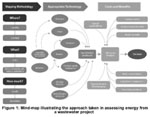Feasibility


The reason for this is because of the feasibility studies they have contracted for tare biased.
Many companies supplying alternative energy and waste to energy technology or products will offer “lowball” energy studies and feasibility studies – even offering them free of charge. However, as we all know, in life we all get what we pay for so, beware of freebees!
These vested companies do this simply so they can slant a study toward their own technologies and products. They make the problem fit their specific technology rather than consider and recommend the best technologies to suit the situation at hand.
By far, in the largest percentage of projects, the correct solution is almost always a balanced combination of the very best and most economical technologies and products available. The idea is to get the best results for the least expenditure. The end user after all must live with the repayment of the debt for twenty or more years. Overpayment is not an option!
The only way to avoid this problem is to have a properly researched, study undertaken by a professional, independent company, with no connection to any manufacture or suppliers of the technology. A biased or “slanted” study will usually be flawed, for obvious reasons and ultimately can cost much more than necessary
The Feasibility Study considers:
INPUT: Disposition of local landfills:
- Is it the intention of the authorities for the new plant to eliminate local landfills or, will the plant be concerned only with the daily delivery of new waste materials?
- What will be the total daily quantity and substance of the materials to be delivered?
Type of waste:
- Will the waste materials delivered, include industrial, hazardous and agricultural waste to the plant?
- If so, in what frequency and quantity?
Delivery:
- How, when and by what means will deliveries be made to the facility?
- This is a complicated matrix requiring considerable research.
Future growth:
- The facility needs to consider the future growth of the area (city and regional area) to allow for growth (increased input) over a period of twenty years.
Expected results:
- • The study will deliver its findings to the client such that a five-year financial projection will indicate the total overheads expressed by detailed line items for every category of expense contrasted against expected off-setting revenues.
- Revenues will be expressed as a function of generated kWH’s or in m3 of Syngas, factored at the desired rates. The figures will indicate break-even operations as well as expressing increasing graduations matching the inputted flows of materials to be gasified.
- Allowances will reflect the capacity of the plant which will match the expected growth of the serviced areas. Equally, consideration will be given to increasing overheads as well as increases in the cost of the generated power to the local power company(s).
- The client is expected to pay a fee to cover the cost of the Feasibility Study. From this we pay our expenses including, travel, the rental of office space and salaries to local personnel retained to assist in researching and obtaining the data to be used in the study. In general, it is expected that a period of 3 months will be required to deliver the completed study.
is expected that a period of 3 months will be required to deliver the completed study.
If desired we can provide access to considerable funding. Once the lender has reviewed the Feasibility Study and met with the local officials and developers, funds will be made available (first draw) to the PPC to cover the costs of engaging the design team and beginning drafting detailed construction plans. Now, the client will to make a payment of $150,000 for the STUDY which can be recouped from the lender once approved.
Following the above, PowerCo Energy Ltd will begin writing the formal Viability Study. In this case, payment would be made from a pre-approved draw reflected in the preliminary budget and again, a period of 3 months is expected for us to deliver the completed plan.
The Viability Study includes letters of intent from local vendors and contractors based on their review of a set of preliminary site plans and specifications.
It is the aim of the Viability Study to engage as many local vendors and contractors as possible to retain the greatest amount of the construction and materials funding in the local area.
